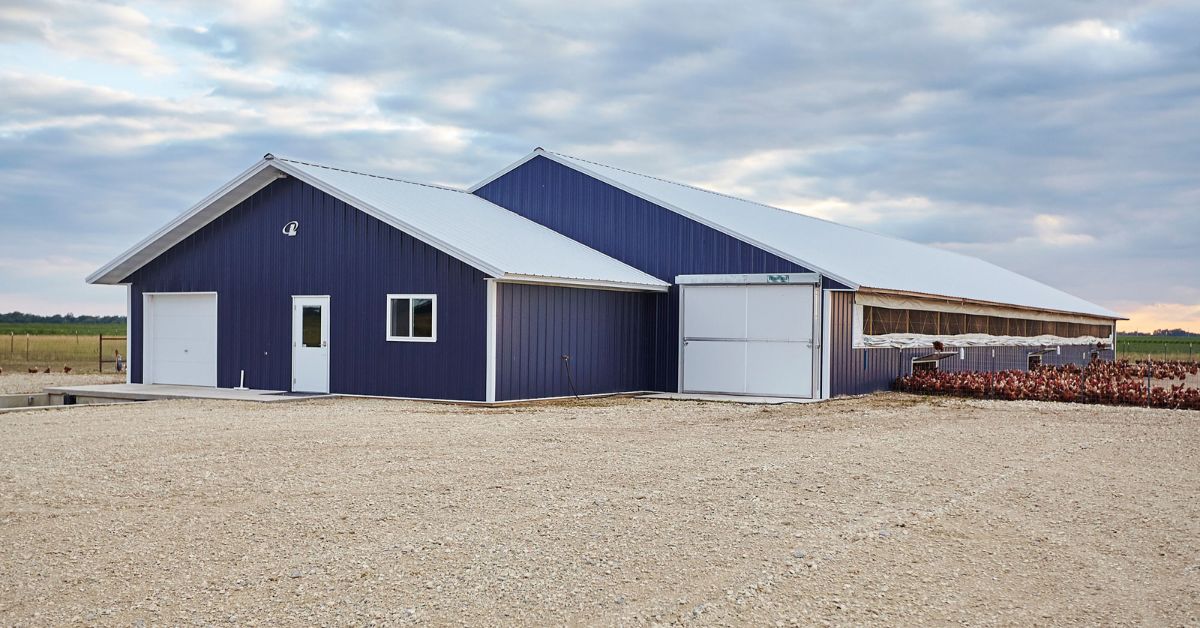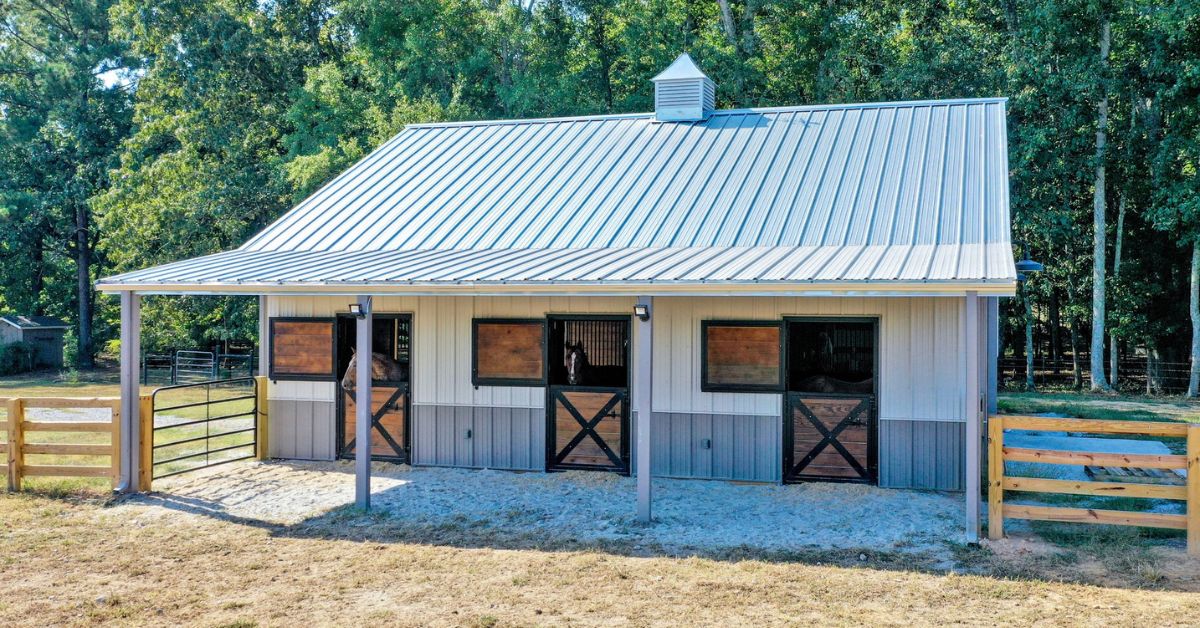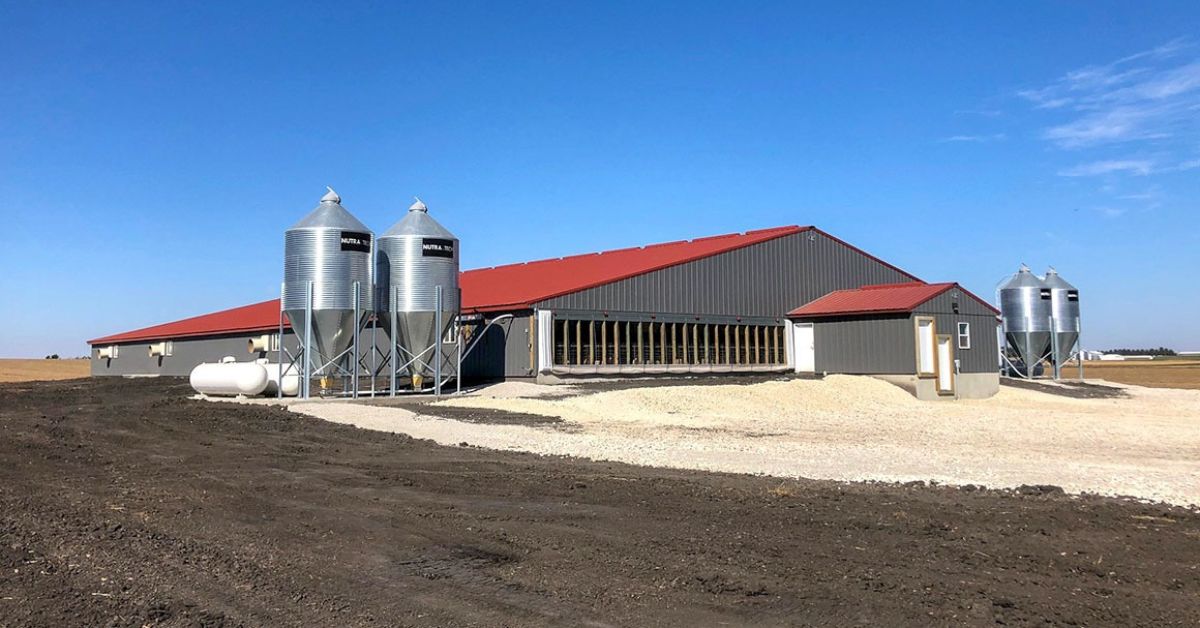What Type of Pole Barn Is Right for Your Land Use?
.jpg)
Do you want to install a pole barn on your land? For those looking to build a workshop, equipment storage, or a horse stable, pole barns offer a practical solution for a variety of purposes. With numerous types and customization options available, what type of pole barn is right for your land use?
Here, we’ll cover everything you need to know to make an informed decision. Read on to explore the benefits of pole barns, the different types available, and tips for choosing a reliable building partner. By the end of this blog, you’ll feel confident in selecting the perfect pole barn for your property.
What Are Pole Barns?
Pole barns are a type of post-frame construction that features large poles or posts for structural support. The poles are either embedded directly into the ground or secured to a concrete base, making pole barns a cost-effective option.
The design offers exceptional strength and durability while providing spacious interiors free from load-bearing walls. Pole barns are common for agricultural purposes, such as storing equipment or housing livestock. They are also popular for workshops, garages, and even residential homes due to their adaptability and affordability.
The Benefits of Using Pole Barns
Pole barns offer several distinct advantages over traditional buildings that set them apart. These include:
- Affordability: Due to simpler construction methods and less material usage, pole barns are cost-effective to build.
- Flexibility: Whether for storage, livestock, or workshops, pole barns serve a wide range of purposes.
- Ease of construction: Users can build pole barns quickly with minimal labor, saving you both time and money.
- Customizable designs: Choose from a variety of sizes, materials, and layouts to meet your needs.
- Durability: When properly constructed, pole barns can withstand tough weather conditions and last for decades.
Types of Pole Barns
The type of pole barn you choose will largely depend on your specific needs and how you plan to use it. Below are some common types of pole barns and their applications.
Agricultural Pole Barns
Agricultural pole barns are essential for farmers and ranchers. These barns can store farming equipment, crops, and hay or house livestock. You can add special features, such as ventilation systems and insulation, to meet agricultural needs.
Residential Pole Barns
If you’re considering building a garage, home office, or even a recreational space, a residential pole barn might be the perfect solution. They’re customizable, so you can design the barn to complement your home’s style.
Commercial Pole Barns
Do you need a space for your business operations? Pole barns are increasingly popular in commercial settings. From serving as retail spaces to warehouses to workshops, pole barns are economical structures for startups.
Equestrian Pole Barns
Horse owners prioritize spacious and accessible stalls for their animals. Equestrian barns, designed for stable and arena use, are built with adequate ventilation, weatherproofing, and customized interiors to keep horses comfortable and secure.

Explore Land Use
Your land’s geography can greatly impact the construction of the pole barn. Considering the following land-use factors will make the project run smoothly.
Soil Quality
Different soil types provide varying levels of support for a post-frame structure. Sandy or rocky soil may require additional stabilization, while clay-heavy soil could impact drainage. Conducting a soil test will help determine which approach and adjustments are necessary for installation.
Climate
Is your area prone to high winds, heavy snow, or excessive rainfall? Reinforcing the pole barn to handle your area’s weather conditions is crucial. For example, roofing materials should be chosen to manage snow loads or withstand extreme sunlight.
Accessibility
Ensure the location of the build is accessible by vehicles, especially if the barn will serve as storage or commercial purposes. A tough-to-reach site could complicate construction and ongoing use.
Additional Factors To Consider
Beyond geography, there are practical details to think about when planning your pole barn.
- Determine the dimensions you’ll need based on the intended usage, whether for large machinery, multiple animals, or a recreational space.
- Work with materials that complement the environment and suit your durability needs. Options include treated wood, steel, and weather-resistant roofing.
- Verify local zoning laws and obtain any required permits prior to commencing construction. Some areas may have restrictions on the use or size of pole barns.
Taking the time to check these boxes will ensure your new pole barn is ready for immediate use once construction is complete.
Decide Which Design Is the Best for Your Land
Choosing the best pole barn design involves evaluating your specific needs and the characteristics of your property. Consider the layout of your land and how the barn’s placement will impact access, drainage, and functionality.
For agricultural purposes, proximity to fields or livestock areas is important, while recreational or storage barns may prioritize easy access from driveways or main roads. Think about the long-term plans for your property to make sure the structure aligns with potential future developments.

Tips for Finding a Building Partner
Choosing an experienced and reliable construction partner will ensure your pole barn is completed on time, within budget, and to your satisfaction.
- Verify potential builders by checking reviews, previous projects, and customer testimonials.
- Request transparent pricing. A detailed estimate will help you avoid unexpected costs.
- Make sure that the builder offers tailored solutions based on your demands.
- Verify the builder’s insurance coverage and licensing to conduct work in your area.
- A good building partner will take the time to understand your vision and offer input on design and material choices.
- Effective communication is key to a successful partnership. Ensure that you and your builder are on the same page from the start.
- Ask about their estimated timeline for completion and guarantee it aligns with your project needs.
Start Building the Perfect Pole Barn Today
Pole barns offer versatility, affordability, and endless customization, making them the ideal solution for a wide range of needs. Knowing what type of pole barn is right for your land use will ensure the best results.
If you’re ready to take the next step, Lester Buildings is here to assist. Our expert building partners will guide you through every stage of the construction process for a hassle-free experience. See how our livestock buildings can help you maximize the potential of your land!
